My Favourite Pieces: Jacqueline Gestetner’s top five pieces from a lifetime of collecting
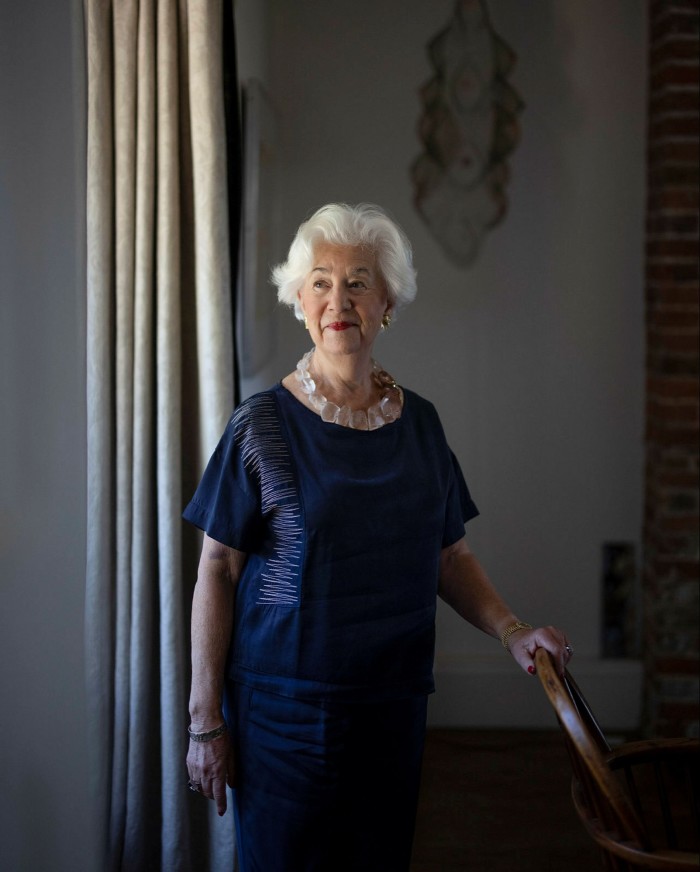
Roula Khalaf, Editor of the FT, selects her favourite stories in this weekly newsletter.
A weekend invitation to Jacqueline Gestetner’s house used to lead to temptation for her guests.
Gestetner, a regular visitor to jewellery studios and school graduation shows, had wanted to help the designers she met to reach a wider audience. “It’s a precarious living so I suddenly had this idea to show some of these jewellers at home — and invite all my friends — and they could sell,” she explains. So “Jacqueline’s Choice” was born.
For the first event in 2005, she hosted 16 jewellers and several hundred guests — all potential customers — over a Saturday and Sunday. It expanded in subsequent years to 22 designers who each gave a percentage of their takings to charity.
Sadly, a move to a flat 10 years later means that Jacqueline’s Choice is no more. But Gestetner, 77, still has an eye for design: she is an ambassador for the Goldsmiths’ Company, the UK membership organisation that supports craftspeople and stages the annual Goldsmiths’ Fair for contemporary jewellery in London.
She is also an experienced collector. She and her husband Jonathan, the owner of Marlborough Rare Books, the antiquarian book dealer in London, gave their collection of paper peepshow printed scenes to the V&A museum in 2016.
Gestetner denies she has a collecting bug, however. “I know some people who collect jewellery and they get everything they can lay their hands on by a certain person, or they only collect brooches,” she says. “I just collect things that I fall in love with.”
She has been working with Beatriz Chadour-Sampson, a jewellery historian, to catalogue her collection. She has not added a lot to it lately — she feels she has “too much”. Instead, she is enjoying what she has, and passing on pieces to her daughter and five granddaughters.
There is also a new fascination to focus on: silver goblets. Maybe she has the bug after all?
She insists not. “Jonathan definitely has a collecting bug and he needs a piece by somebody, a book by somebody,” she says. “I don’t have that.”
Necklace, Emmeline Hastings (2012)
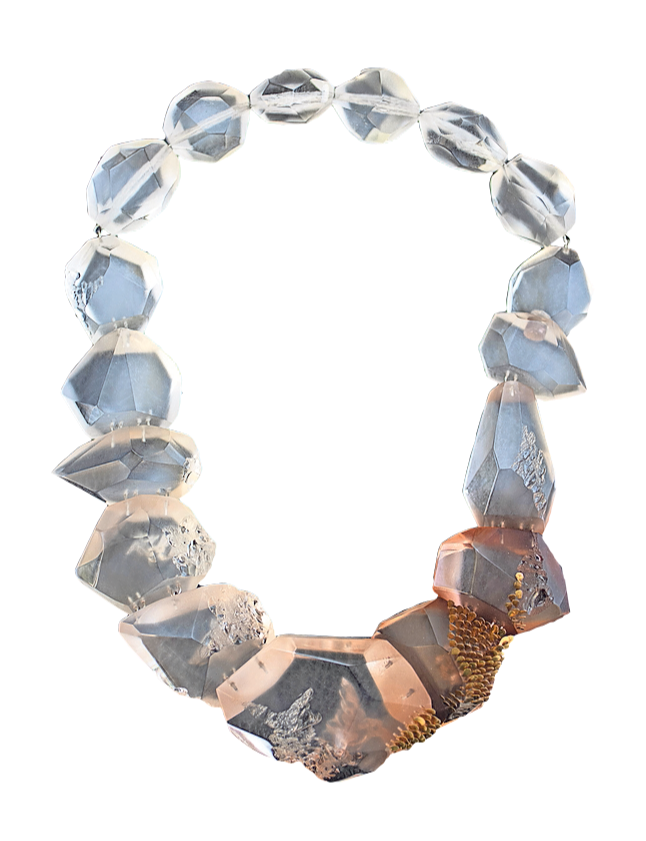
Gestetner seeks “innovative, interesting, original design, beautiful craftsmanship and wearability” in jewellery. She bought this “very stunning”, chunky necklace, which has a magnetic catch, at a Jacqueline’s Choice event. Six years later, she commissioned matching clip-on earrings.
She regards Hastings, a UK jeweller who combines acrylic with gold and silver, as “a very original voice”. “Her pieces are very stylish,” she says.
Necklace, Angela Cummings for Tiffany & Co. (1970s)
Her husband is “brilliant” at buying her jewellery, says Gestetner. He returned from a trip to New York in the 1970s with a necklace featuring seashells, fish and sponges by Cummings, who later launched an eponymous brand and sold her designs at the city’s Bergdorf Goodman department store. There was also a pair of matching earrings.
“He arrived in New York and the hotel room wasn’t ready, it was too early, so he went for a walk and had breakfast at Tiffany’s,” she says.
Gestetner thought the necklace unusual at the time for its matte gold appearance. “I said, ‘Oh it’s wonderful darling, it doesn’t look real so I can wear it all the time,’” she says. “I don’t think [Jonathan] was terribly impressed by that response.”
Necklace, Daphne Krinos (c 2003)
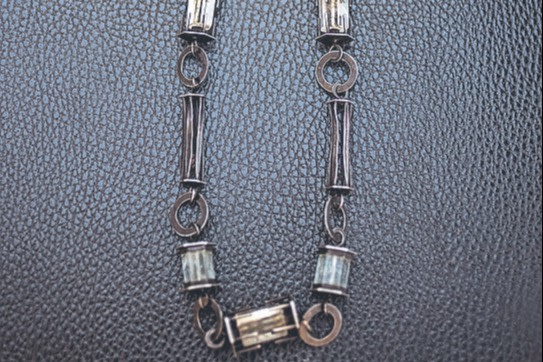
Her husband also acquired her first necklace by Krinos. Gestetner is a great admirer of the Greek-born, London-based jeweller’s work, which is often inspired by architecture and cityscapes. “She’s got an endless imagination,” she says.
She left a craft fair without the necklace — which had hexagonal, pale aquamarine stones in cages of oxidised silver — after deciding it was too expensive, “so [Jonathan later] quietly went and bought it for me and told Daphne not to tell me until he gave it to me”.
Ring, Annamaria Zanella (2015)
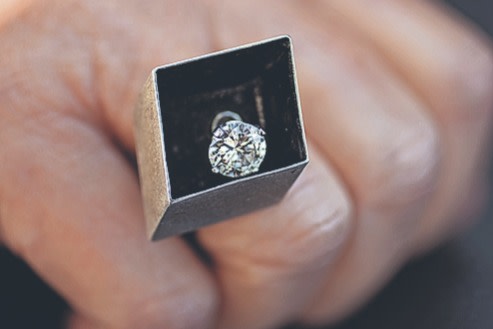
Jewellery has an “emotional context” for Gestetner. She commissioned Zanella to make a new piece from her late mother’s diamond ring as she did not wear it often. The result is a white gold, enamel and silver ring, “a wonderful box with the diamond [en] tremblant inside”.
Gestetner met the Italian jeweller while on holiday in Padua. After seeing pieces in a museum by Padua School jewellers, she asked two local women where she might buy their designs. By chance, one knew Zanella, and Gestetner visited her home studio. “We fell in love with each other immediately,” says Gestetner. “She’s the most adorable person.”
Bangle, Barbara Crowe (1960s)
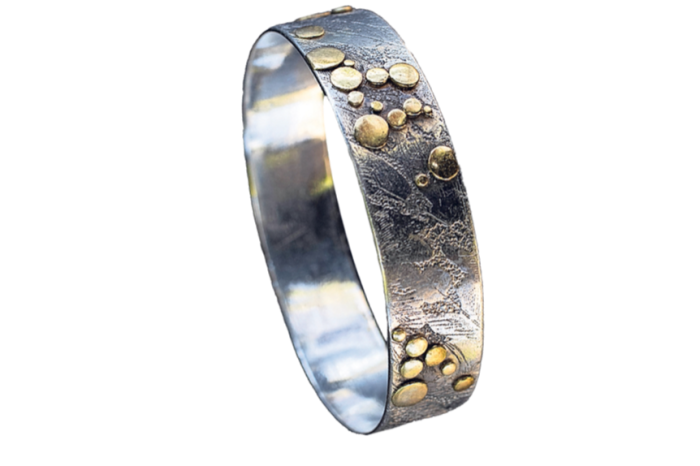
Having worn her silver and gold bangle “most days” after buying it at a craft fair in the 1960s, Gestetner was “devastated” to arrive on holiday five years ago to find it missing. She realised she had not reclaimed the piece at airport security. Fortunately, it was in the lost property office. Gestetner has not encountered Crowe’s works since she bought the bangle.
Comments